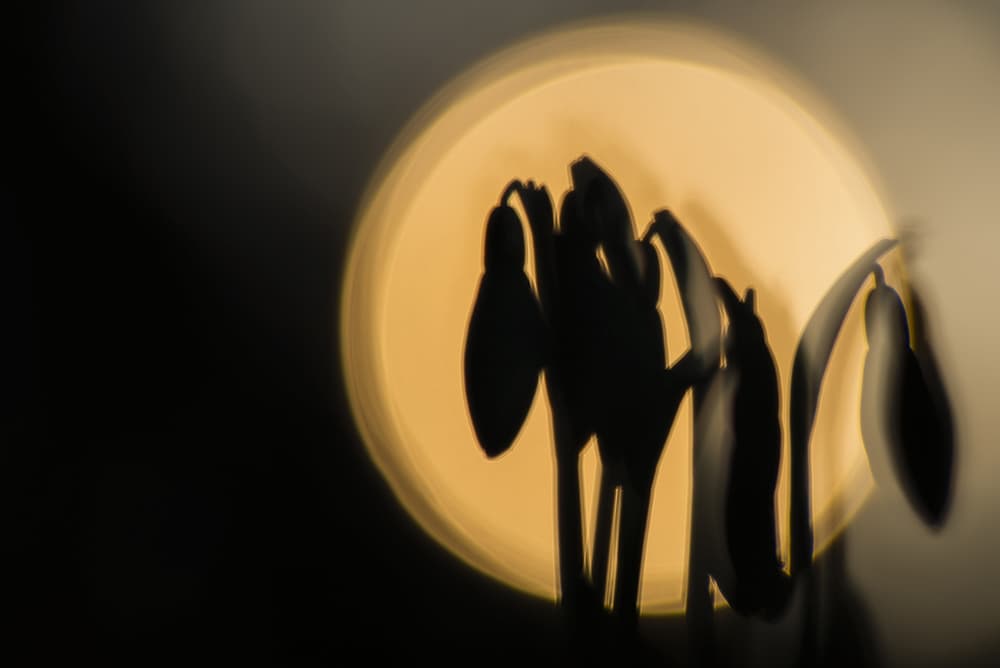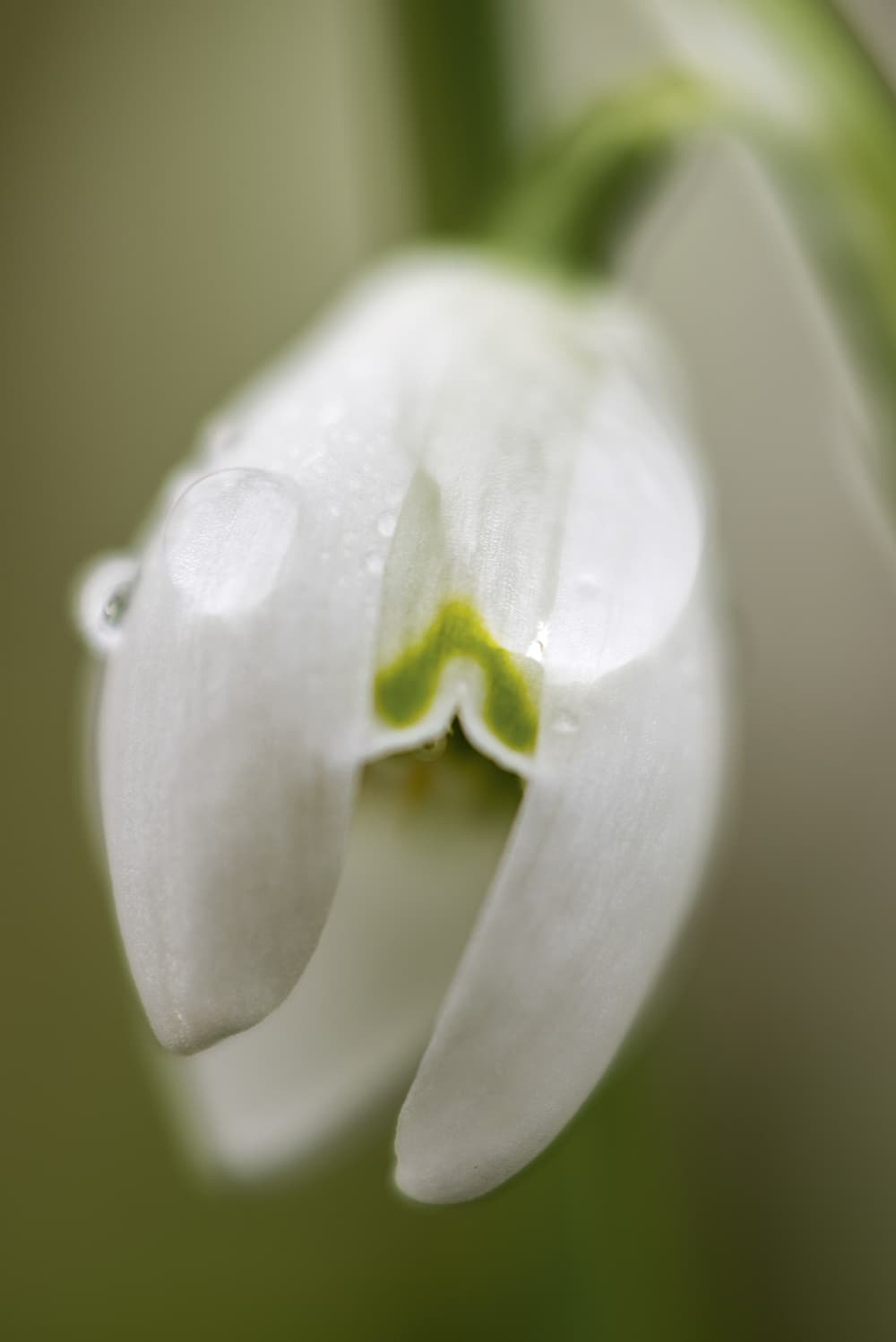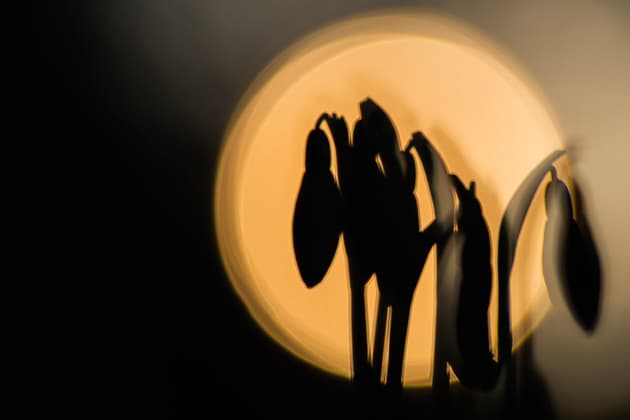
Use light, or shoot from an unusual angle, to produce a more thoughtful composition. All images by Robert Canis
Snowdrops are among the first flowers to bloom in the new year and are often referred to as the harbingers of spring. They’re described as ‘three drops of milk hanging from a stem’ and are certainly one of our most photogenic and widespread flowers, making them the perfect subject to help shake off the winter blues. Even on a cold gloomy day, the sight of snowdrops is enough to lift your spirits.
More often than not, snowdrops are seen in large numbers and in some places form swathes of nodding white heads. It’s a wonderful sight, particularly on a bright sunny day, but their sheer volume can be quite an assault on your senses and it can be difficult to know where to begin. Depending on the conditions and whether or not I am able to make a return visit, I prefer to work in a relatively methodical manner. I begin by capturing the scene with a wideangle lens and, more often than not, position the flowers very close to the lens, which can often produce dramatic results, putting the plant in context. Once satisfied, I move on to recording whole plants and find that lenses of at least 100mm are perfect for this, providing control over background coverage. My personal favourite lenses when shooting with the full-frame Nikon D750 are the 105mm and 200mm Micro options. Look for those plants that are on the periphery as opposed to working on those in and among all the others. This will not only make isolating a single plant more straightforward but will also lessen any chances of you inadvertently flattening nearby snowdrops.
I then move in, closer still, perhaps filling the frame with just the head. You’ll need a dedicated macro lens for this or, at the very least, a set of extension tubes or close-up lenses that screw onto the lens’s front element, just like a filter. These come in varying strengths measured in dioptres and are an excellent way of enabling you to get closer to the subject. Beware, however, as, just like most things, you get what you pay for, so buy the best you can afford.
Where to focus
When holding flower photography workshops, I am often asked: ‘Where do you focus?’ To me, this depends on what part of the flower dominates the frame and the aperture you have selected. If you are photographing the whole plant and the stem occupies the greater part, then I would focus on this. If the flowering head fills the frame, then I focus on the front petal. To be on the safe side, focus on different parts of the flower, then see which one you prefer when you view the images on your computer screen at home.
Once I have covered all the bases and I’m happy in the knowledge that I have captured the flowers in various ways, I look at producing more thoughtful compositions utilising interesting light, or shooting from an unusual angle. This is why it’s helpful to find snowdrops growing close to where you live as you have the luxury of repeat visits at different times of the day. I’m fortunate in having two such places relatively close to my home: one is a church with an accompanying graveyard where wild flowers grow, and the other is a very secluded woodland on the North Downs. Both offer different perspectives, and the graveyard is handy for those early morning visits, where just a short walk of 50 metres is all that’s required.

The sun waits for no one, so make an early start and set up for that stunning composition
Set up early
If you are up for an early start, make sure you arrive well before the sun rises as you will need to give yourself ample time to seek out any potential compositions. The sun waits for no one – 30 minutes after sunrise and that’s it. After this, the light becomes too harsh and that golden glow has gone. However, you needn’t despair, as there are sure to be lots of places where the sun hasn’t yet reached the flowers and you can continue shooting, such as within the shadow cast by a tree or church.
Digital is wonderful in that it enables us to experiment without additional cost through failures, so look at creating images with a difference. Shoot into the sun and introduce flare to give a soft, ethereal glow; silhouette snowdrops against the rising or setting sun; or shoot through other snowdrops, creating a white vignette. Lastly, don’t be a slave to your tripod. Sometimes it’s best to free yourself from its burden so you can wander around, camera in hand, and let your creativity flow.

Droplets of early morning dew, or even rainfall, can greatly enhance your image
Top tips
Get down low for impact
It may not be the most comfortable way to work, but images taken from ground level tend to have a greater impact. This is particularly the case with shots taken with a telephoto lens. To make life easier, use the camera’s articulated LCD screen, or attach a right-angle viewing attachment.
Use live view for accurate focusing
Live view has to be one of the best features of a digital camera for close-up photography. Don’t rely on your camera’s AF, as depth of field at close quarters is minimal. Switch the camera to MF, activate live view and zoom in on the area you want to appear sharp, then focus manually.
Shoot into the sun
Through working at either end of the day and utilising the low, warm, directional sunlight, you can create images that will really stand out. Handhold the camera rather than set up a tripod, select a wide aperture and move among the flowers, shifting focus until you see a composition that works.

Introduce flare, or shoot into the sun, to give a soft ethereal glow
Kit list
Beanbag
This will get you much lower than a tripod. It creates a more stable platform and will enable you to work between plants without causing damage to other foliage.
Polarising filter
The leaves of snowdrops are surprisingly shiny and can be distracting. A polarising filter will help to reduce the glare and make the colour of the leaves more vibrant.
Reflector
This is a necessity when shooting flowers as it will provide fill into those otherwise dark areas. A piece of A5 card with foil attached is ideal.
Location guide
Snowdrops favour damp woodlands and the sides of streams, so my advice is get out there and explore. Graveyards are among the best places – they never fail and you can visit them at all hours of the day. There are also numerous country estates, some of which are listed here, that open their gardens throughout February in celebration of the snowdrop.
- Anglesey Abbey, Cambridgeshire
- Attingham Park, Shropshire
- Chirk Castle, Wrexham
- Fountains Abbey, North Yorkshire
- Kingston Lacy, Dorset
- Nymans, West Sussex
- Goodnestone Park Gardens, Kent
- Birks of Aberfeldy, Perth and Kinross
- Hopetoun House, Edinburgh
- Afon Dwyfor Valley, Gwynedd
- Dyffryn Gardens, Vale of Glamorgan
- The Argory, Dungannon
An award-winning nature photographer with 20-plus years’ experience, Robert Canis is represented by three international agencies. He holds regular workshops on wildlife and landscape photography. Visit his website www.robertcanis.com








